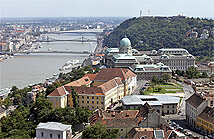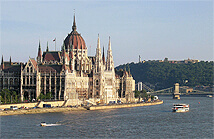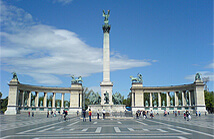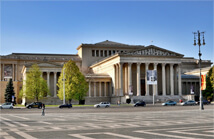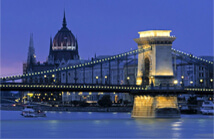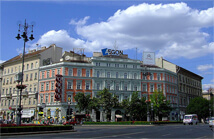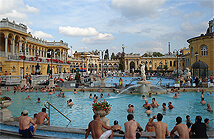Dental Holiday in Hungary
Some of the world-famous sights you must see
Come to Budapest, Hungary, for affordable dental treatment, and get a lifetime's experience in this beautiful city. Make the most of your stay with us! In 2002 the UNESCO pronounced the historic centre of Budapest part of the World Heritage Site.
The Castle District
The Castle District is one the most important monument groups in the country; it forms a close unit that includes the rows of houses on the banks of the Danube, the bridges, the Houses of Parliament, the Basilica, the Hungarian Academy of Sciences, the Gresham Palace and some other historic buildings.
The Parliament
The Hungarian Parliament Building (Hungarian: Országház, literally "country house") is the seat of the National Assembly of Hungary, one of Europe's oldest legislative buildings, a notable landmark of Hungary and a popular tourist destination within Budapest. It lies in Lajos Kossuth Square, on the bank of the Danube, in Budapest. It is currently the largest building in Hungary.
Heroes Square
Heroes Square, located in the heart of the city, at the end of Andrássy Avenue, is home to the Museum of Fine Arts and the Hall of Art. It is famous for the iconic statue complex, the Millenium Monument, containing the statue of the Seven Chieftains of the Hungarian. The square is one of the historically most significant places in Hungary, as it has been host to important political events.
Museum of Fine Arts
The building itself was designed and constructed by Albert Schickedanz and Fülöp Herzog, and opened its gates in 1906. On the ground floor are the exhibitions of Classical Antiquities and of nineteenth-century paintings and sculptures, the Renaissance hall, where, in addition to Renaissance frescoes and fountains, items from the Sculpture Collection may be seen, the Prints and Drawings Gallery with temporary exhibitions, and the Marble and Baroque halls. Due to the continuous renovation work on the building, individual permanent exhibitions of the Old Masters’ Gallery may temporarily be moved.
Chain Bridge
The Chain Bridge (Hungarian: Lánchíd) is a suspension bridge that spans the River Danube between Buda and Pest, the western and eastern sides of Budapest. It was the first permanent bridge across the Danube in Budapest, and was opened in 1849.
It is anchored on the Pest side of the river to Széchenyi (formerly Roosevelt) Square, adjacent to the Gresham Palace and the Hungarian Academy of Sciences, and on the Buda side to Adam Clark Square, near the Zero Kilometre Stone and the lower end of the Castle Hill Funicular, leading to Buda Castle.
Andrássy avenue
Andrássy Avenue is an iconic boulevard in Budapest, dating back to 1872. It links Elizabeth Square with the City Park. Lined with spectacular Neo-Renaissance mansions and townhouses featuring fine facades and interiors, it was recognised as a World Heritage Site in 2002. It is also one of Budapest's main shopping streets, with fine cafes, restaurants, theatres, and luxury boutiques.
Széchenyi thermal spa
Budapest can rightly be called the city of spas, and the Szechenyi Bath and Spa was its first thermal bath on the Pest side. At the time, back in 1881, it was called the "Artesian Bath", and was only a temporary establishment. In 1913, it was converted into a permanent bath, and received its present name and most parts of its pretty yellow building complex. In 1927, beach sites, as well as public bathing departments for gentlemen and ladies, were added. In 1960, another expansion added a group thermal section (for use in bathing suites), and a daytime outpatient hospital. The year 1999 saw a complete reconstruction of the swimming pools.
Registration
Register for dental checkup!
-
How To Find The Best Dentist In Budapest
- 2019. October 05
-
Should I Get My Dental Implants Abroad? Questions You Should Ask
- 2019. September 19
-
The Forest & Ray Dental Clinic In Budapest: Why You Should Get To Know Us
- 2019. September 05
-
Dental Destination: Why Budapest Is Best
- 2019. August 21
-
Questions About Receiving Dental Implants Abroad
- 2019. August 05

